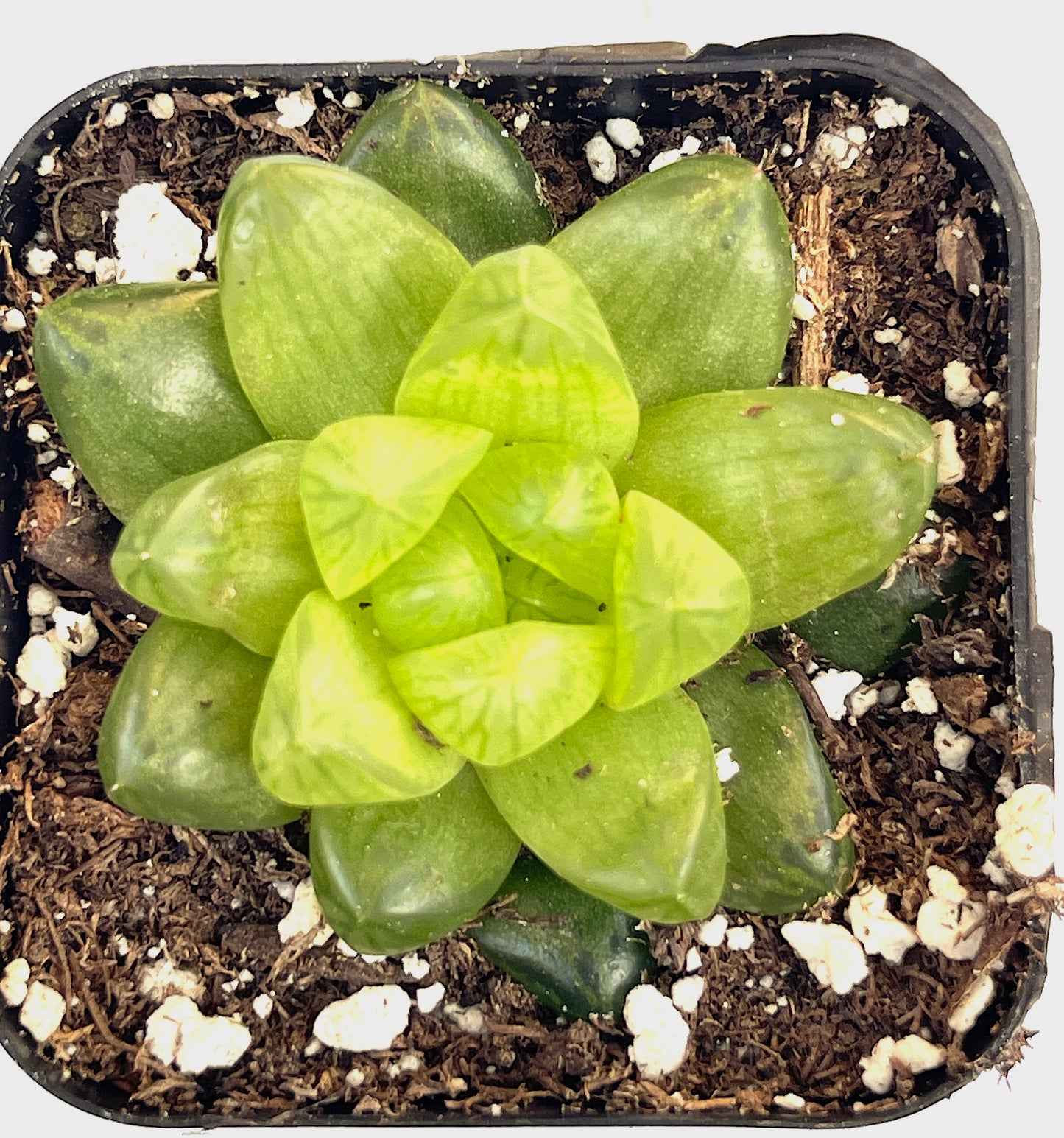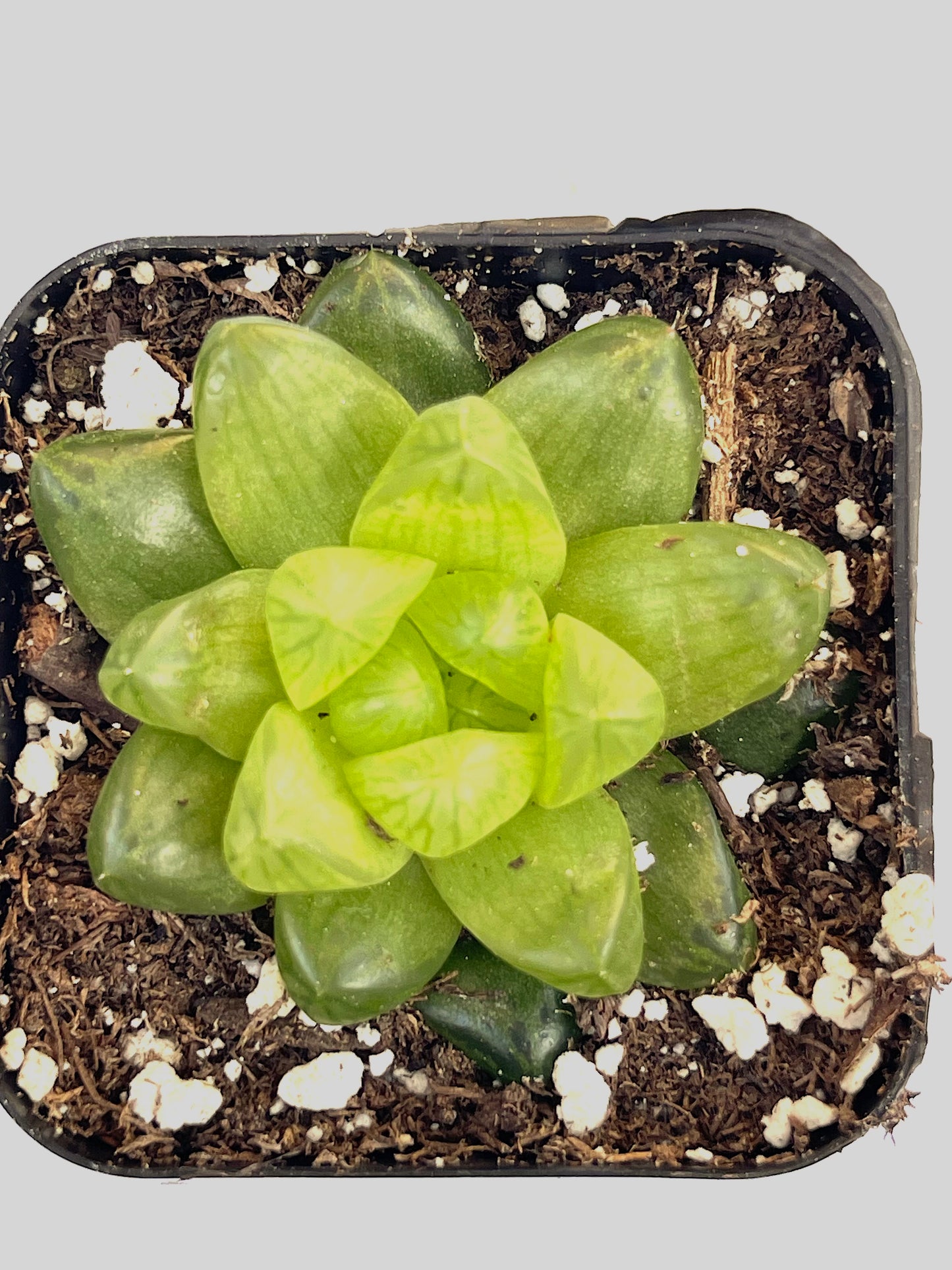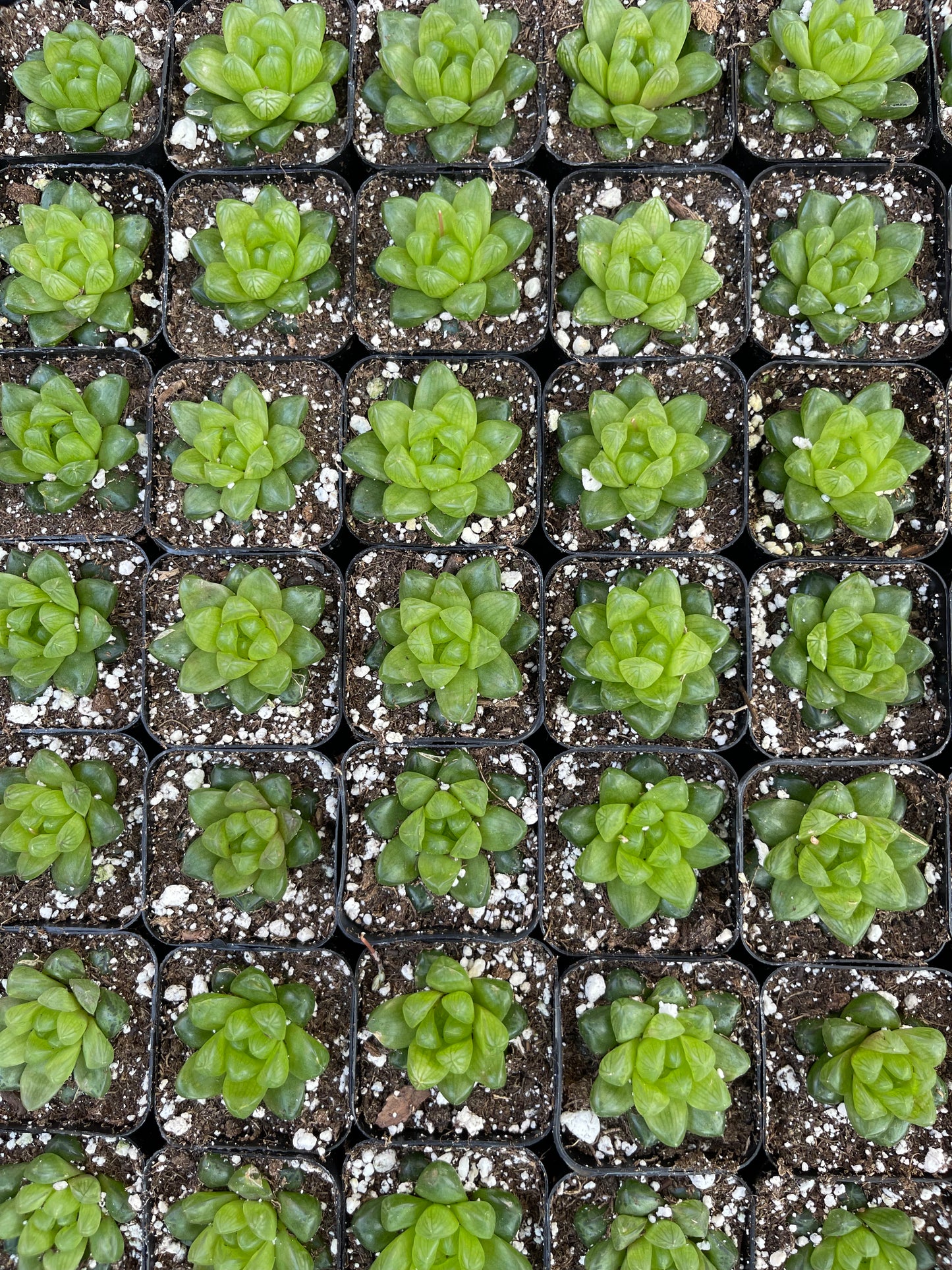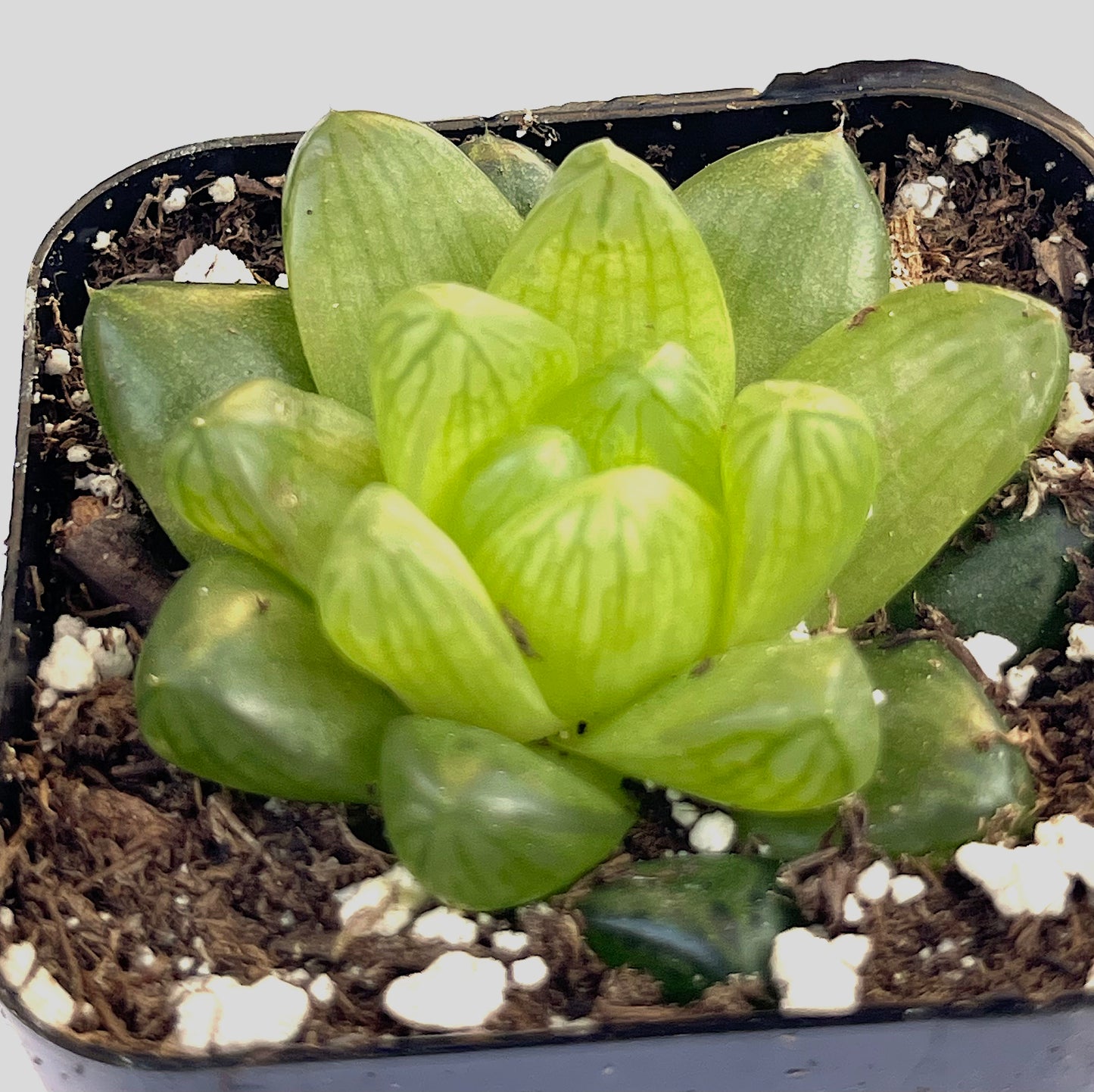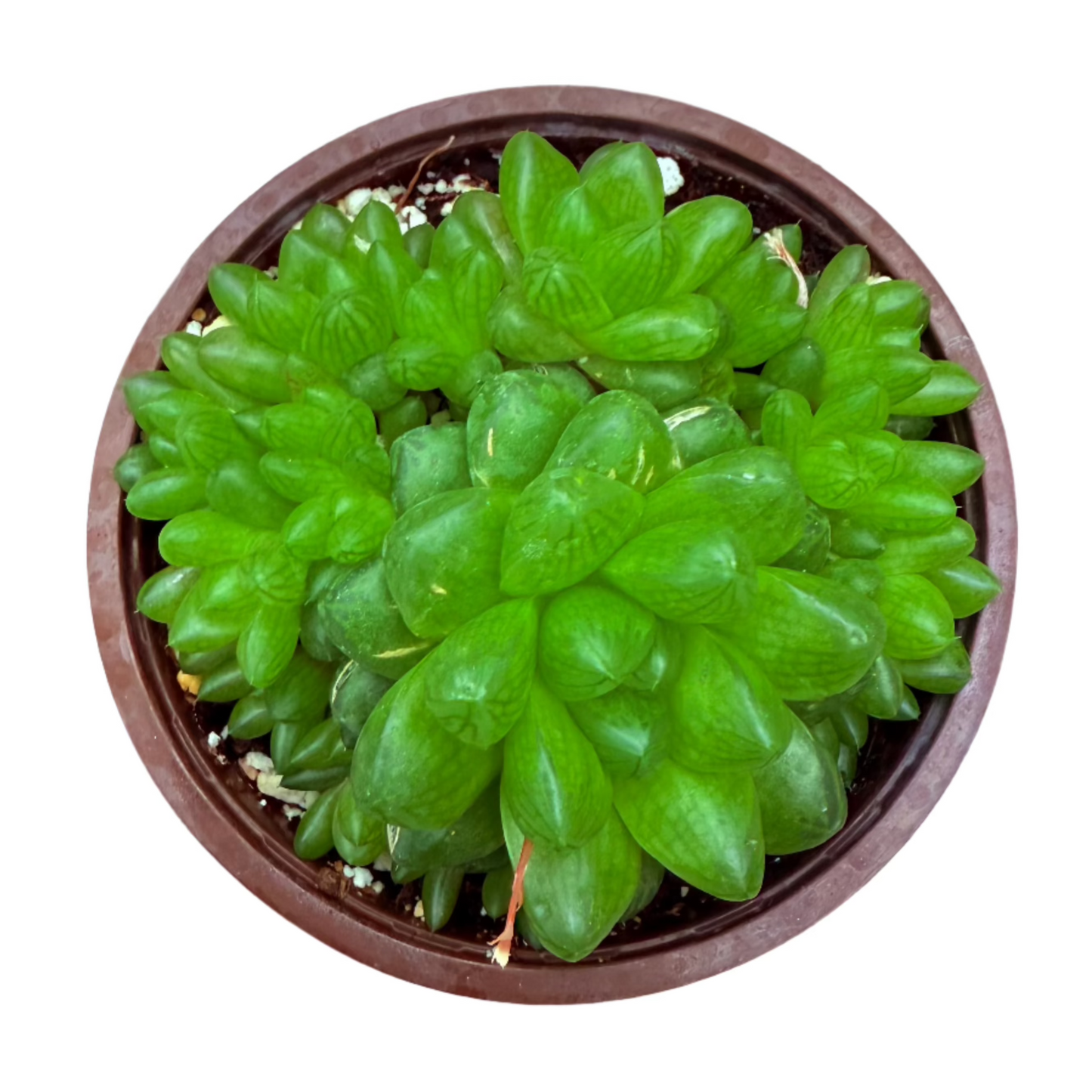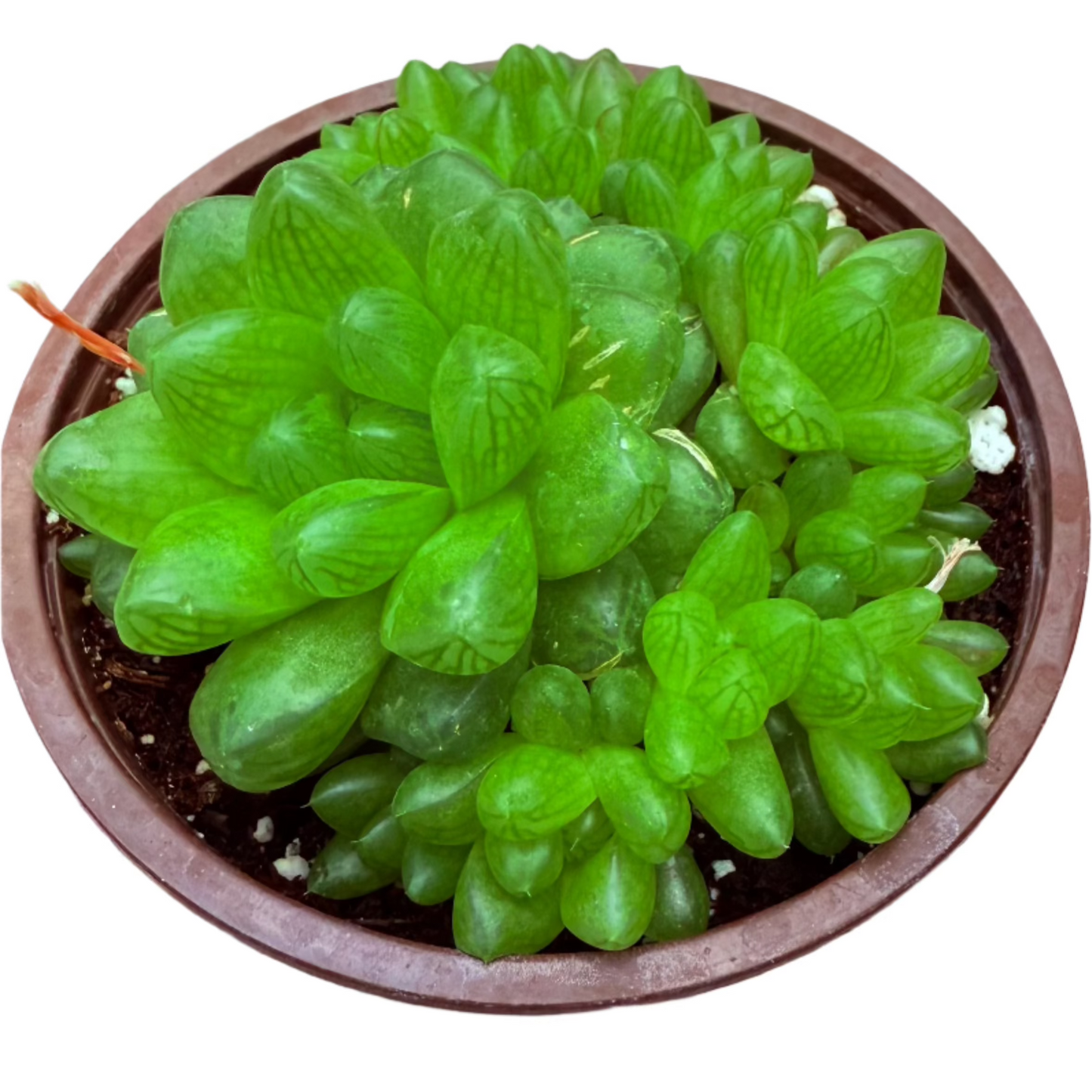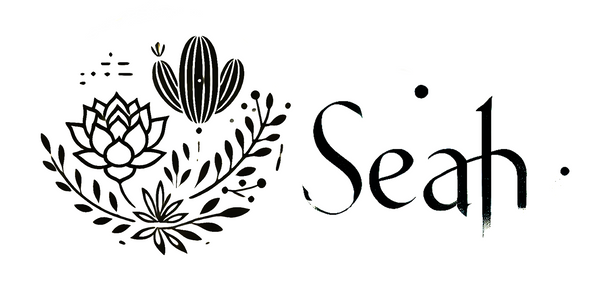haworthia cymbiformis var. obtusa
haworthia cymbiformis var. obtusa
In stock
Couldn't load pickup availability
📝 Description
Haworthia cymbiformis var. obtusa, commonly known as the Cathedral Window Haworthia, is a popular succulent due to its distinctive and ornamental appearance. Here’s a detailed overview in English regarding its morphological characteristics, growth habits, maintenance points, and reproduction method:
Morphological Characteristics
- Leaves: This variety is noted for its plump, translucent leaves that form in a rosette pattern. The leaves are green to pale green and can turn slightly pinkish under strong light. They are smooth, with no spines on the edges, and the tips are often rounded and slightly transparent, allowing light to pass through, resembling stained glass windows of a cathedral, hence the name.
- Size: It grows up to 10 cm in height and spreads outwards with its offsets. The rosettes can reach up to 10-15 cm in diameter.
- Flowers: It blooms with small, white flowers that appear on a slender, up to 30 cm tall inflorescence. However, the flowers are not as showy as the foliage.
Growth Habits
- Light: Prefers bright, indirect sunlight. Direct sun may cause the leaves to scorch, but they do appreciate a bit of morning or late afternoon sunlight.
- Temperature: It thrives in warm conditions but can tolerate temperatures as low as 5°C. Protect from frost.
- Water: This succulent is drought-tolerant. Water thoroughly when the soil is completely dry and reduce watering in the winter to prevent root rot.
Maintenance Points
- Soil: Requires well-draining soil. A cactus or succulent potting mix is ideal.
- Pot: Use a pot with drainage holes to prevent water from accumulating at the bottom.
- Fertilizer: Feed with a diluted succulent fertilizer during the growing season (spring and summer) for best results, usually once a month.
- Pruning: Not typically necessary, but you may remove dead or damaged leaves to keep the plant healthy and attractive.
Reproduction Method
- Offsets: The most common method of propagation is by separating the offsets, which are small plants that grow at the base of the parent plant. Gently remove the offsets and allow the cut to callous over for a few days before planting in well-draining soil.
- Leaf cuttings: Though less common and with a lower success rate compared to offsets, leaves can be used for propagation. Pluck a healthy leaf, let it dry for a few days to form a callus, and then place it on top of the soil until it roots and forms a new plant.
- Seeds: It can also be propagated from seeds, but this method is less common due to the slow growth rate and the difficulty of obtaining seeds.
Haworthia cymbiformis var. obtusa is admired for its ease of care, making it suitable for beginners in succulent gardening. With its distinctive looks and low maintenance requirements, it's a splendid choice for indoor gardens, terrariums, and as a desk plant.
🌿 Care Tips
Plant Care
Light
Water
Soil
Temperature
Hardiness
Fertilizer
Propagation: Leaf/offset cuttings
Common issues: Etiolation, mealybugs, rot
🌟 Note: It’s normal for succulents to appear slightly shriveled after shipping. They usually recover within a few days in a suitable environment.
📦 Shipping Info
Seah Shipping Policy
Effective Date: November 2025
This Shipping Policy applies to orders delivered within the continental United States (the lower 48 states). By purchasing from Seah, you agree to the terms below.
1) Shipping Cost & Free Shipping
- Automatic rate calculation: Shipping is calculated at checkout based on weight, destination ZIP and carrier rates.
- Free Standard Shipping: Orders $59+ (pre-tax, after discounts) ship free to the lower 48 states.
- Alaska, Hawaii, Puerto Rico & other territories: Not eligible for free shipping or standard flat offers at this time.
- Taxes/Duties: Applicable sales tax and any fees are shown at checkout.
2) Processing Schedule
- Business days only: We process and ship Monday–Friday. No shipping on weekends or U.S. federal holidays.
- Handling time: 1–3 business days after payment confirmation.
- Cut-off time: Orders placed before 3:00 PM (PST) are prioritized for same-day processing; others roll to the next business day.
- Changes/Cancellations: Email support@seah.co within 12 hours of purchase; after that, the order may already be in processing.
3) Transit Times
| Method | Estimated Transit | Total ETA (Handling + Transit) |
|---|---|---|
| Standard | 5–8 business days | 6–11 business days |
| Express | 3–4 business days | 4–7 business days |
ETAs are estimates. Weather, holidays, carrier delays or high-volume periods may extend delivery times.
4) Seasonal Temperature & Plant Safety
- Winter (Nov–Mar): We strongly recommend adding a heat pack at checkout to protect plants from freezing. Orders shipped without a heat pack during cold conditions are not covered for cold damage.
- Summer heat: During extreme heat waves, we may hold shipments until temperatures normalize. We’ll notify you if there’s a hold.
- Packaging: Plants are carefully packed (bare-root or potted by type/size) to minimize transit stress.
5) Carriers & Tracking
- We ship via USPS / UPS / FedEx, selected automatically for best service to your address.
- When your order ships, you’ll receive a tracking email. Tracking typically activates within 24 hours.
- If you haven’t received tracking within 3 business days, contact us at support@seah.co or +1 (626)-999-1314.
6) Address Changes & Delivery Issues
- Before shipment: Request address changes within 12 hours of ordering.
- After shipment: We can’t modify the address once dispatched. Please contact the carrier for redirection options.
- PO Boxes: Supported for USPS only; UPS/FedEx require a street address.
- Seah isn’t responsible for delays or loss due to incorrect addresses provided at checkout.
7) Service Area
We currently ship to the continental U.S. (lower 48 states). Orders to AK/HI/PR and other territories are not eligible for free shipping and may be restricted.
8) Support
- Hours: Mon–Fri, 9:00 AM – 5:00 PM (PST)
- Phone: +1 (626)-999-1314
- Email: support@seah.co
- Address: 7870 Margaux Pl, Rancho Cucamonga, CA 91739, United States
Thank you for supporting our California nursery—each plant is hand-selected and packed with care. 🌱
